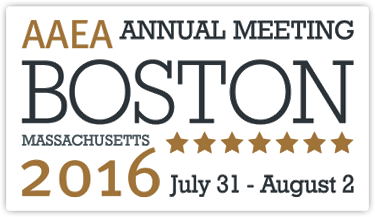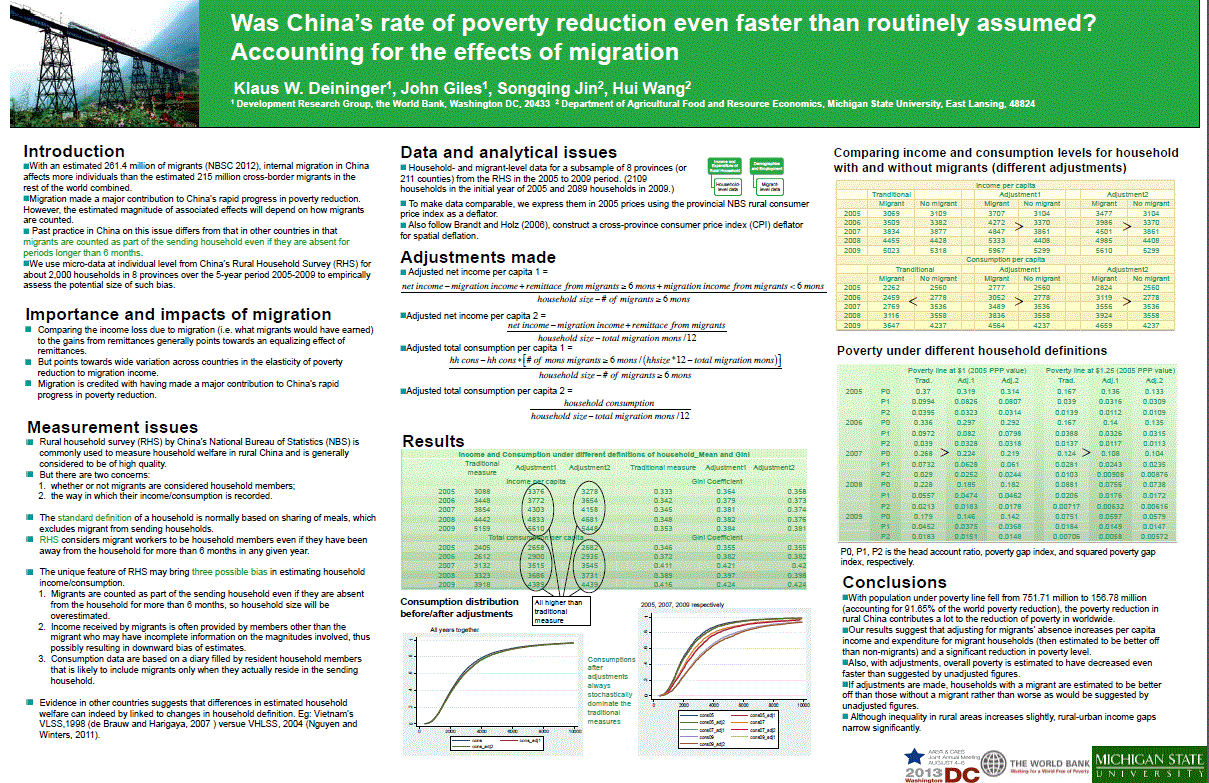Selected Poster Presenter Requirements
By May 25, 2016
- Be a 2016 AAEA member
- Registered for the 2016 Annual meeting
- Upload finished poster (PDF) to AgEcon Search (Instructions)
Poster Design
To help you develop your poster, we have provided a few suggestions below. This is meant as a general overview to get you started.
Poster Size
The maximum poster size is 4 feet high by 8 feet long, minus a 1-inch margin. Your actual poster may be smaller. Pushpins will be provided for you to hang your poster.
Content
- Introduction: Provide context for your research. Why you are excited about it?
- Objectives: What questions did you address or answer?
- Methods: Key information on your research design and analysis. Keep it brief.
- Results & Discussion: What was observed? How do the results relate to the original questions? Focus on the key points.
- Conclusions: What did you learn?
Replace text with graphical elements as much as possible (e.g., photographs or maps of study's location, other visual aids to convey key results), but do not forget your complete contact information. Consider including a photograph of the presenting author.
Layout
Clearly indicate your key message. Avoid clutter and unnecessary detail. Don't fight the reader's gravity-pull from top to bottom and left to right. Remember graphical elements, such as balance, symmetry, rhythm, repetition, and change.
Aesthetics
Any text in your poster should be readable from 6 feet away, including text in figures. This means no text should be smaller than a 20-point font. The title should be much larger and readable from a distance (12 feet or more).
Use fonts without serif, but bold. Use dark letters on light backgrounds. Use color carefully; very bright colors can easily fatigue the reader. Stick to a theme of 2-3 colors.
Below you will find a few posters that were displayed at the 2013 Joint Annual Meeting. They are all great examples of how to communicate information in an effective and visually interesting way.




